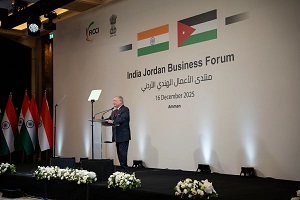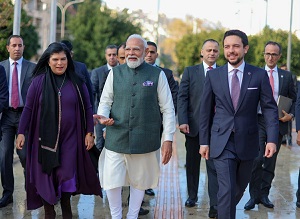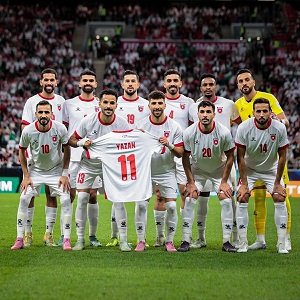The transformation races in the region - By
Fares Braizat, Jordan News
The writer is chairman of NAMA Strategic Intelligence Solutions
Moving from the ad hoc, and centralized, time-centered development plans of the 1960s and 1970s to future visions that stretch to 2040, the Gulf states have become global competitors and seek to diversify their economies to match the ever-changing regional and global realities.
Jordan and Egypt have joined the race of transformation in a more serious manner in the past few years. Despite the contentious issues of social and political identities, the Gulf states’ march ahead, which is fueled by oil and gas revenues, is unstoppable. Jordan and Egypt have to rely on human capital and management. There are other significant differences, in the boldness and seriousness of implementation.
The Saudi vision 2030, which was unveiled 2016, is by far the boldest and most ambitious thus far. It aims at “creating a diversified, innovative and world-leading nation, for the benefit of future generations”.
The Saudi government delivered on the economy and more. The Economist Intelligence Unit reported last week that the Saudi economy will be the fastest growing “major economy” in 2022. The social transformation that the Saudi government undertook and achieved cannot be missed. The feeling in the streets of Saudi Arabia is that there is a sense of ownership in the reform and transformation processes. The slogan “dynamic society” delivered “unprecedented change” by “reshaping the social and cultural landscape in pursuit of a new era of inclusive opportunity”. The fast-paced Saudi transformation is presenting a catch-up challenge to all others.
The UAE’s multiple visions produced a world-class business and tourism hub in Dubai, whose vision, efficient implementation, and achievements preceded all others in the region, and, directly or indirectly, is reverberating across the region.
The “New Kuwait” 2035 vision, which was launched in 2019 in line with the UNDP Sustainable Development Goals with the aim of “transforming Kuwait into a financial and trade hub” where “the private sector leads the economy, creating competition and promoting production efficiency”, is not only less ambitious compared to the Saudi 2030 vision but also seems more reluctant to effect social change, as the language of the document suggests.
Despite the contentious issues of social and political identities, the Gulf states’ march ahead, which is fueled by oil and gas revenues, is unstoppable. Jordan and Egypt have to rely on human capital and management.
Oman Vision 2040 puts the sultanate in a position to “overcome challenges, keep pace with regional and global changes, generate and seize opportunities to foster economic competitiveness and social well-being, stimulate growth, and build confidence in all economic, social and developmental relations nationwide”.
The Omanis refer to the “renaissance era” that preceded the current vision and are working hard on diversifying the economy after building world-class infrastructure across the country. They show a very serious drive to change the business environment, while preserving the “authentic culture”.
The Qatari vision is on a cautious path toward “modernization and preservation of traditions”. The provisional outcome is commendable.
The Bahrain economic vision 2030’s overall direction of business and competitiveness drive “focuses on shaping the vision of the government, society, and the economy, based on three guiding principles: sustainability, fairness, and competitiveness”.
What is missing in some of these visions are publicly available reports on milestones, key performance indicators, learned lessons, and corrective actions to address glitches in implementation.
The two models that are more advanced in this regard are those of Dubai and Saudi Arabia. The rest of the countries still have some catching up to do.
The key is found in Oman vision 2040: “keep pace with regional and global changes”. This requires from all not only a “desire to do” and an “ambition to achieve”, but also decisive and efficient management that is based on competitive performance, reward, and punishment. Jordan’s economic vision 2033 and Egypt’s 2030 are no exception.
Fares Braizat in the chairman on NAMA Strategic Intelligence Solutions, former minister of youth, moderator of the working group on Tourism as part of Jordan Economic Vision 2030, and member of the Royal Committee to Modernize the Political System. fares@namasis.com
Latest News
-
 Defective used gas Heaters behind recent suffocation deaths — probe
Defective used gas Heaters behind recent suffocation deaths — probe
-
 Trump imposes full travel bans on seven more countries, Palestinians
Trump imposes full travel bans on seven more countries, Palestinians
-
 King, India PM attend opening session of India-Jordan Business Forum
King, India PM attend opening session of India-Jordan Business Forum
-
 Crown Prince accompanies India PM on visit to Jordan Museum
Crown Prince accompanies India PM on visit to Jordan Museum
-
 Jordan beat Saudi Arabia to reach Arab Cup final
Jordan beat Saudi Arabia to reach Arab Cup final